Dry skin is an annoyance for anybody, and it can also affect our pets. If your pooch suffers from flakes or itchiness, their skin is probably dry. You may be wondering, "what can I put on my dog for dry skin?" Fortunately, there are plenty of products and treatment options you can try before the problem becomes severe. Many of the things that cause dry skin in humans also affect dogs. There are also some causes that are unique to our furry friends. In this guide, we'll go over the typical culprits of dryness and some useful home remedies!
Why Do Dogs Get Dry Skin?
Dry skin in dogs can be attributed to a variety of factors, with the most common culprits being allergies and parasites. However, it's essential for pet owners to consider every aspect of their dog's lifestyle when addressing skin health. While dry skin might simply be due to excessive bathing, it can also indicate a more significant issue that requires attention.
Allergies as a Cause of Dry Skin
Allergic reactions are a prevalent cause of dry skin in dogs. Just like humans, dogs can develop allergies to various substances, leading to itchy skin, flaky skin, and overall skin irritation. Environmental allergies—such as pollen, dust mites, feathers, and grass—can result in dry skin on dogs, particularly during certain seasons. Moreover, food allergies are another significant contributor to dry skin. Ingredients like grains or certain proteins in your dog’s diet might trigger an allergic reaction, manifesting as dry, irritated skin.
Dog owners should monitor their pet's response to different foods and consider dietary adjustments if skin problems persist. To protect your furry friend from these allergens, it’s crucial to minimize exposure where possible. For instance, if your dog’s dry skin worsens during pollen-heavy seasons, try reducing outdoor activities during peak times to prevent further irritation.
The Role of Flea Allergy Dermatitis
Another common cause of dry skin in dogs is flea allergy dermatitis. This skin condition arises when a dog has an allergic reaction to flea saliva, leading to intense itching, dry skin, and hair loss. Flea allergy dermatitis is one of the most common skin disorders in dogs, especially during the summer months when flea activity is high.
Treating this condition typically involves using flea control products like insecticides. However, some home remedies may offer relief, such as apple cider vinegar sprays, though it’s essential to consult with a veterinarian before starting any treatment to ensure it’s safe and effective for your dog.

Other Causes of Dry Skin in Dogs
Beyond allergies, several other factors can contribute to dry dog skin. Parasites such as mites can cause intense itching and dryness, leading to secondary skin infections if not treated promptly. Additionally, frequent or excessive bathing with harsh shampoos can strip the natural oils from your dog's coat, resulting in dry, itchy, or flaky skin.
A nutritionally deficient diet lacking in essential fatty acids and vitamins can also contribute to poor skin health. Dogs require a balanced diet rich in omega-3 and omega-6 fatty acids to maintain healthy skin and a shiny coat. Ensuring that your dog receives the proper nutrients through their food can prevent skin issues and support overall dog’s health.
Finally, systemic disorders such as hypothyroidism or autoimmune diseases can manifest as dry, irritated skin. If your dog’s skin problems persist despite changes in diet and environment, it’s crucial to seek veterinary advice to rule out any underlying health conditions. By understanding these potential causes and taking proactive steps to address them, you can help your dog maintain healthy, moisturized skin and prevent the discomfort associated with dryness.
Read More: Probiotics For Dogs
Symptoms of Dry Dog Skin
The symptoms of dry skin can look fairly commonplace, like licking, scratching, dandruff, or hair loss. While some of these behaviors and symptoms are natural for a healthy dog, too much could mean they need some extra attention or a trip to the veterinarian. At the end of the day, you know your dog better than anyone! When your dog's grooming or shedding reaches an unusual high, you'll be the first to notice. Symptoms of dry skin include:
- Flaking/Dandruff
- Scaling
- Shedding
- Pimples
- Red skin
- Itching/Scabs
- Odor
Flaking/Dandruff
Flakes or dandruff are dead skin cells (usually on the stomach or underarms) that fall off of the dog. To spot this symptom, wait for the animal to lie down. After they stand, check the area for flakes of skin. If there are more than just a few specks of dead skin, you may need to take the animal to the vet.
Scaling
Large pieces of skin fall off of the dog's dry body. This symptom is similar to flaking and dandruff, except the pieces of skin are much larger. While a little bit of dandruff is natural in all dog breeds, scaling is more uncommon. Since scaling can indicate seborrhea, a form of dermatitis, you should take your pet to a vet to diagnose the issue.
Shedding
Hair loss could simply be the result of shedding season, but it is also a sign of skin problems. Patchy areas of exposed skin is a sure sign that something in your pet's skin or coat is abnormal. Take note of your dog's normal shedding patterns when the season comes around so that you know when it becomes excessive. For most dogs, shedding occurs in Spring and Fall, though some canines (like the Golden Retriever) can lose hair year-round.

Pimples
Pimples can result from skin problems for your pooch, though they aren't necessarily linked to dry skin. These small, red bumps can be a sign of canine acne. Angry, red bumps along the body could also signify inflammation or skin that has been rubbed raw.
Red Skin
Red skin is another indicator of inflammation. Redness usually means the area is irritated and not receiving enough oil or moisture. Dry skin is more likely to become inflamed than a hydrated coat.
Itching/Scabs
A dog's response to many skin issues is to lick, chew, or scratch the affected area. These behaviors can damage the dog's coat and skin if performed excessively and lead to scabs. The dog could also break open any pimples they have, exposing an already sensitive area to infection.
Odor
A bacterial or yeast infection can cause a foul smell to come from your dog's dry skin. Moderate levels of dandruff and flaking can still be present in a healthy dog, but a bad odor from dry, itchy skin usually means something is wrong with the pet's health.
What Can I Put on My Dog's Skin for Dryness?
Luckily, there are several ways to treat your dog's dry skin. From exciting new products like CBD dog shampoo to age-old home treatments like oatmeal baths, there's an option for every pooch. You can even combine these tips to not only treat skin problems but prevent them as well!
CBD Dog Shampoo
The best options for dry skin should replenish your pet's natural oils. A great method can help your dog stop itching while simultaneously cleaning the skin, preventing future infection. One product can do all of this while also boosting your pet's overall wellbeing, and that's why we recommend CBD dog shampoo.
CBD (short for cannabidiol) dog shampoo is an excellent, non-toxic way for pet owners to give their furry friend multiple benefits with a single product. The shampoo moisturizes your dog's skin, soothing irritation like pimples, scabs, or rawness. CBD shampoo cleans your dog, reducing the chance of flea infestation and allergies. It's also a good way to add some cannabidiol (CBD) to your canine's system. CBD actually interacts with cannabinoid receptors on your dog's skin to unleash its benefits!
Cannabinoid receptors are parts of the endocannabinoid system (ECS), which can be found in nearly all mammals. The ECS is crucial for our dog's health (and ours too!). It regulates vital functions like digestion, mood, skin durability, and more. When you give your dog CBD, externally or internally, it promotes their ECS.
If you want extra cannabidiol benefits, you can also give your pup some CBD for dogs by mixing it into its food to make sure your best friend feels as content as possible. HolistaPet CBD oil contains nutritious hemp seed oil, which boasts all the omega fatty acids (and the optimal ratio of them!). The ultra-nourishing, natural extract can boost your pet's coat with an array of beneficial fats and protein.
Oatmeal Bath
An oatmeal bath is a classic, natural treatment that can soothe dry skin for both people and dogs. It's been used for centuries to treat irritated skin, but what makes it so effective? Oatmeal contains avenanthramides, which apparently have compounds with antioxidant and anti-irritating properties. Simply fill a tub or a large bucket with warm water. Put a cup of whole oat oatmeal in the blender, grind it up, and add the powder to the water. Let your dog soak in the mixture for about 10 minutes before rinsing them off and toweling them dry!
Vitamin E
Many owners find that vitamin E can help their dog's dry skin. However, each breed requires a different amount of vitamin E. You'll need to either discuss this treatment option with a veterinarian or get some pet-friendly vitamin E that can be applied topically (rubbed into the skin). You can rub topical oils onto the affected area at home. Products like rejuvenating lotions can contain vitamin E and other natural ingredients to restore skin health. However, before you add too much lotion to your pet's coat, consult with a vet.
Olive Oil
We use olive oil in all types of recipes for ourselves, so why not share some with our furry friends? Treat your dog to some extra-virgin olive oil by mixing it in with their food. The ideal portion is one teaspoon per 20 pounds of body weight. The same olive oil you buy at the store is safe for dogs. Though, since it is high in fat and calories, your pooch should only get some 2-3 times a week. Olive oil is full of antioxidants, omega-6, and omega-3 fatty acids, all of which are great for a dog's dry skin. Plus, it can combat certain parasites!

Coconut Oil
You can use coconut oil to help your dog in a variety of ways. Add some to your pet's food, rub it on its coat, or combine coconut oil with other beneficial products. It's also a fantastic carrier oil for essential oils, another good option for moisturizing dry skin. Carrier oils increase a product's bioavailability, which refers to the amount of the substance that reaches the animal's bloodstream.
Coconut oil can also act as a carrier for CBD. Use coconut oil with CBD, essential oils, or on its own to give your pooch the relief it needs. Apple cider vinegar can help your dog's dry skin. Many owners have found that apple cider vinegar is an effective humectant, a substance that preserves moisture. You can apply apple vinegar to your dog topically or orally.
Rubbing this vinegar on your dog's coat replaces old and potentially infectious bacteria and reduces the skin's yeast population. You can also use apple vinegar to clean your pet's feet and ear canals. Orally, apple vinegar acts as a natural acidifier and may increase blood flow to the skin. If more severe symptoms such as scabs, wounds, or a rash are present in your dog, see a veterinarian before using apple vinegar.
What is the Best Option for Dogs With Dry Skin?
The best overall option for your dog's coat and skin may be a mixture of these remedies, although we highly recommend CBD dog shampoo. While other remedies can target some of your furry friend's symptoms, CBD shampoo also provides relief to the entire body. You can clean your dog's skin on the outside, nourish it, and provide a soothing sensation with CBD suds.
Fortunately, you don't just have to try a single treatment method. Combine different techniques, use essential oils or CBD with coconut oil, and let us know your most effective methods. With cleansing properties, moisturizing effects, and the benefits of CBD oil, you'll quickly see why this is product is one of the best for dry skin!
Prevention Tips for Dogs With Dry and Itchy Skin
You can take care of your dog's skin before they develop symptoms by providing basic care every day. This includes a proper diet, plenty of water, and exercise that is suitable for the breed. There are even more things we can due to ensure our pet's skin stays healthy, including:
- Eating a diet full of omega-6 and omega-3 fatty acids (mixing salmon or hemp seed oil into dog food is a good way to get these essential nutrients)
- Avoiding parasites and infection by staying up to date on your dog's preventatives. These include vaccinations as well as flea, worm, and tick treatments
- Grooming regularly, also remember to check their skin often for anything problematic
- Attending routine checkups at the vet
- Providing dog supplements when recommended by a veterinarian

Some dog breeds — such as Labrador Retrievers and American Bulldogs — are more prone to dry skin and may need specific help. For example, some dogs have facial folds that you must pay particular attention to while grooming to avoid bacterial infection. If you're not sure whether your dog is susceptible to dry, flaky skin, ask your veterinarian. They can help you find the right products and treatments for your pooch. You may want to ask about CBD since it's a relatively new option.
What Can Happen If You Don't Treat Your Dog's Dry Skin?
Owners that don't look after their dog's skin put their pet at risk of developing discomfort, pain, and serious illnesses. Dandruff could turn into raw skin, minor pimples could burst and become infected, or a fungal infection might spread across multiple pets. These are some common skin diseases in dogs:
- Yeast infection: A fungal infection that usually affects the eyes or ears
- Folliculitis: A bacterial infection that causes sores, bumps, and scabs on the skin
- Impetigo: Another bacterial infection that usually affects puppies and can cause blisters
- Seborrhea: A genetic disease that results in greasy skin prone to scaling
- Ringworm: A condition caused by a fungus, not a worm, which can cause circular lesions
This doesn't mean a dog should be bathed five times a day either, as excessive grooming removes the natural oils meant to protect the skin. A healthy balance is the best thing for your pet's overall well-being. Avoid allergens, keep your furry friend clean and flea-free, and feed it a proper diet to minimize the risk of infection.
When do you know it's time to see a veterinarian? Bleeding, bumps, growths, rashes, foul odors, and redness are all signs that you should consult an animal expert. Above all, your dog's body language is the best indicator when it's time for a trip to the vet!
Final Thoughts - What Can I Put on My Dog for Dry Skin?
Dry skin may be an issue for some dogs, but that doesn't mean it can't be managed. With preventative care and nourishing home remedies like CBD dog shampoo, every pooch can feel like a million bucks. Before making any major changes to your pet's diet, schedule an appointment with your veterinarian.
They can determine whether your dog has any underlying conditions, breed quirks, or other complications. Add coconut oil to your dog's food, make some oatmeal à la pooch, or try a little bit of each remedy until your furry friend's dry skin is a thing of the past! Or if you're curious about more home remedies for dogs, look here.








![Probiotics For Dogs [Soft Chews]](http://www.holistapet.com/cdn/shop/files/Probiotic-Infographic-1_472d7a29-e30c-435a-9638-1365d8c3a9f9.jpg?v=1725384841&width=104)


















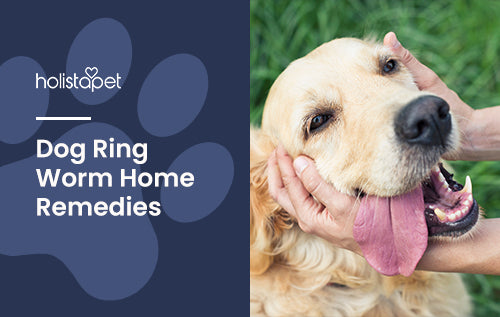








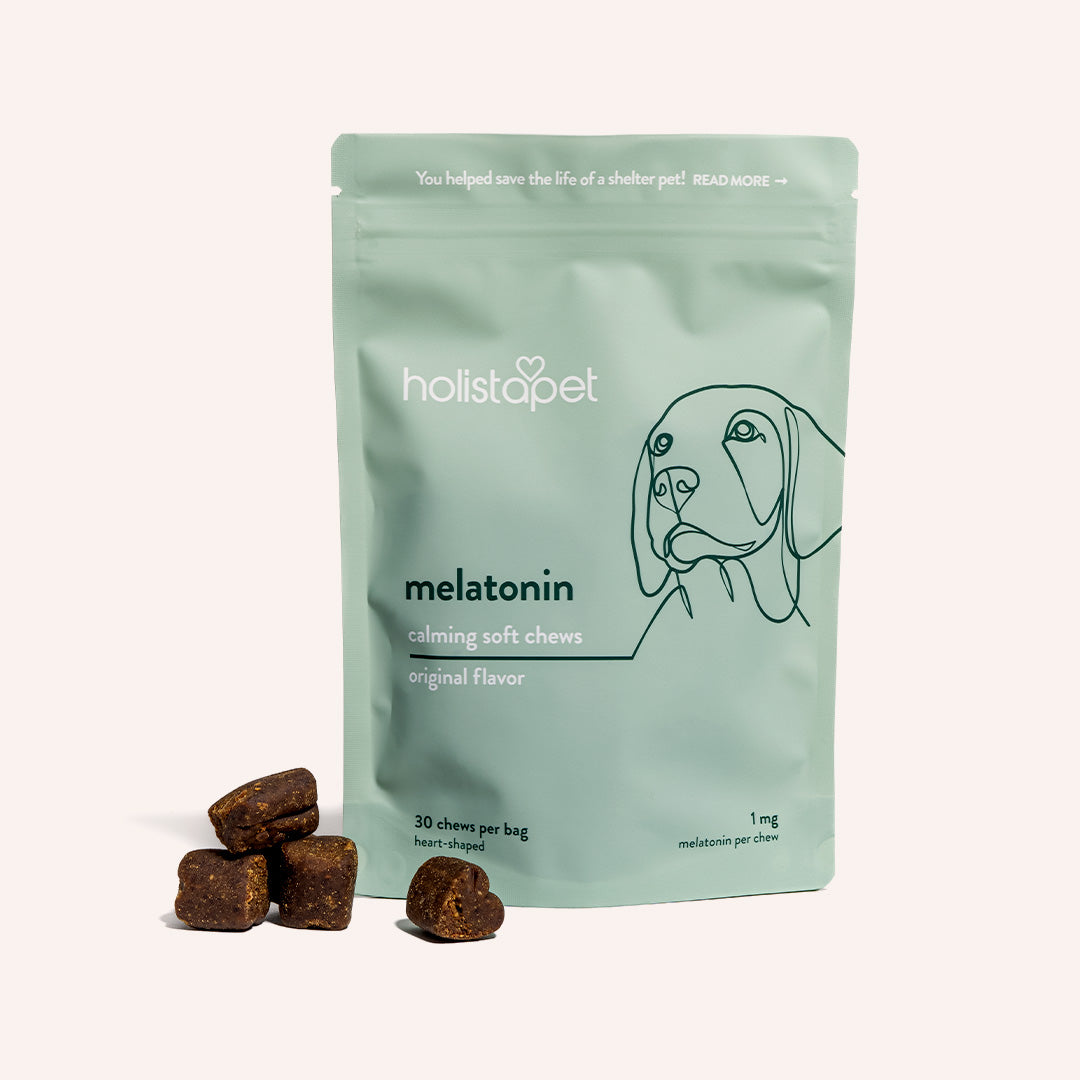
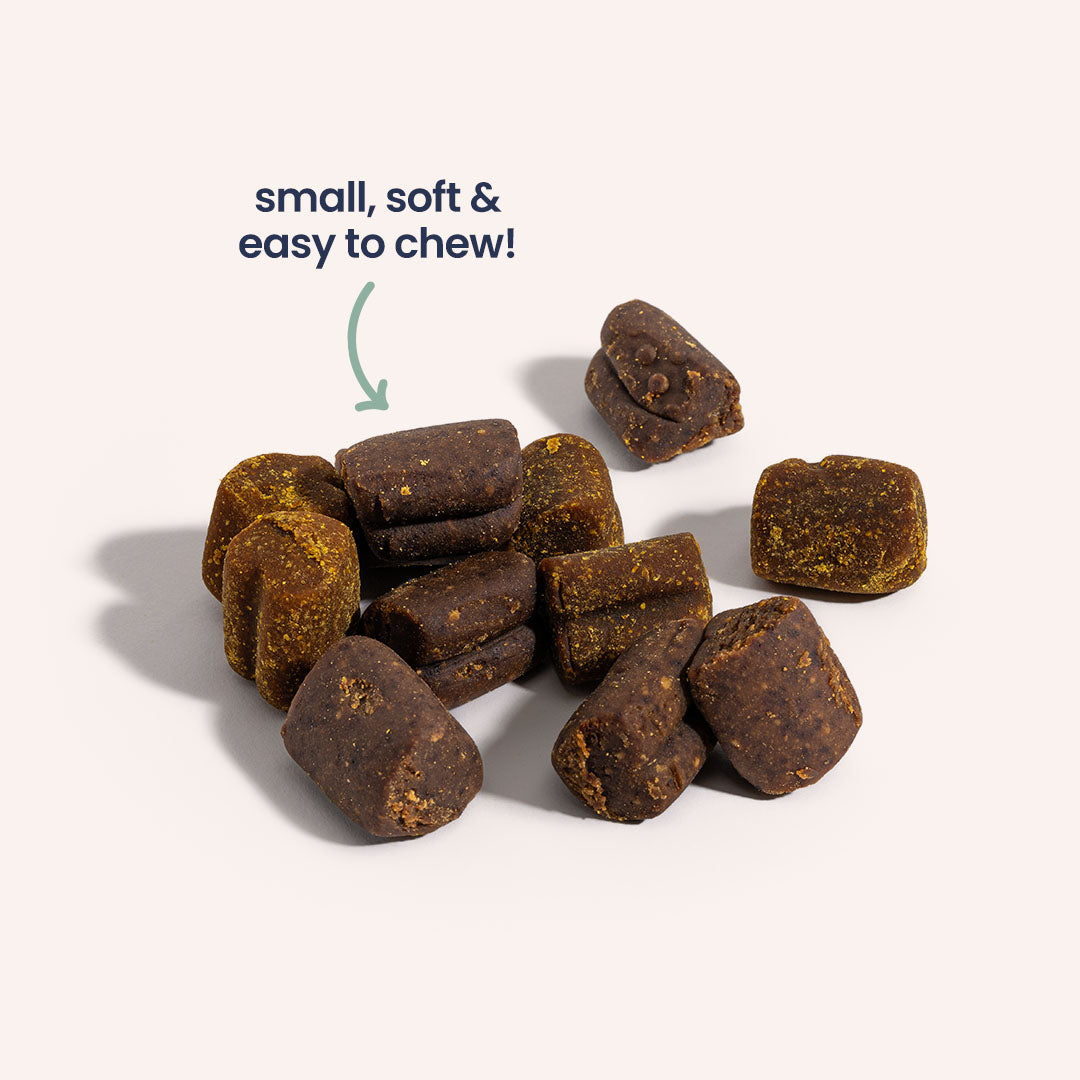
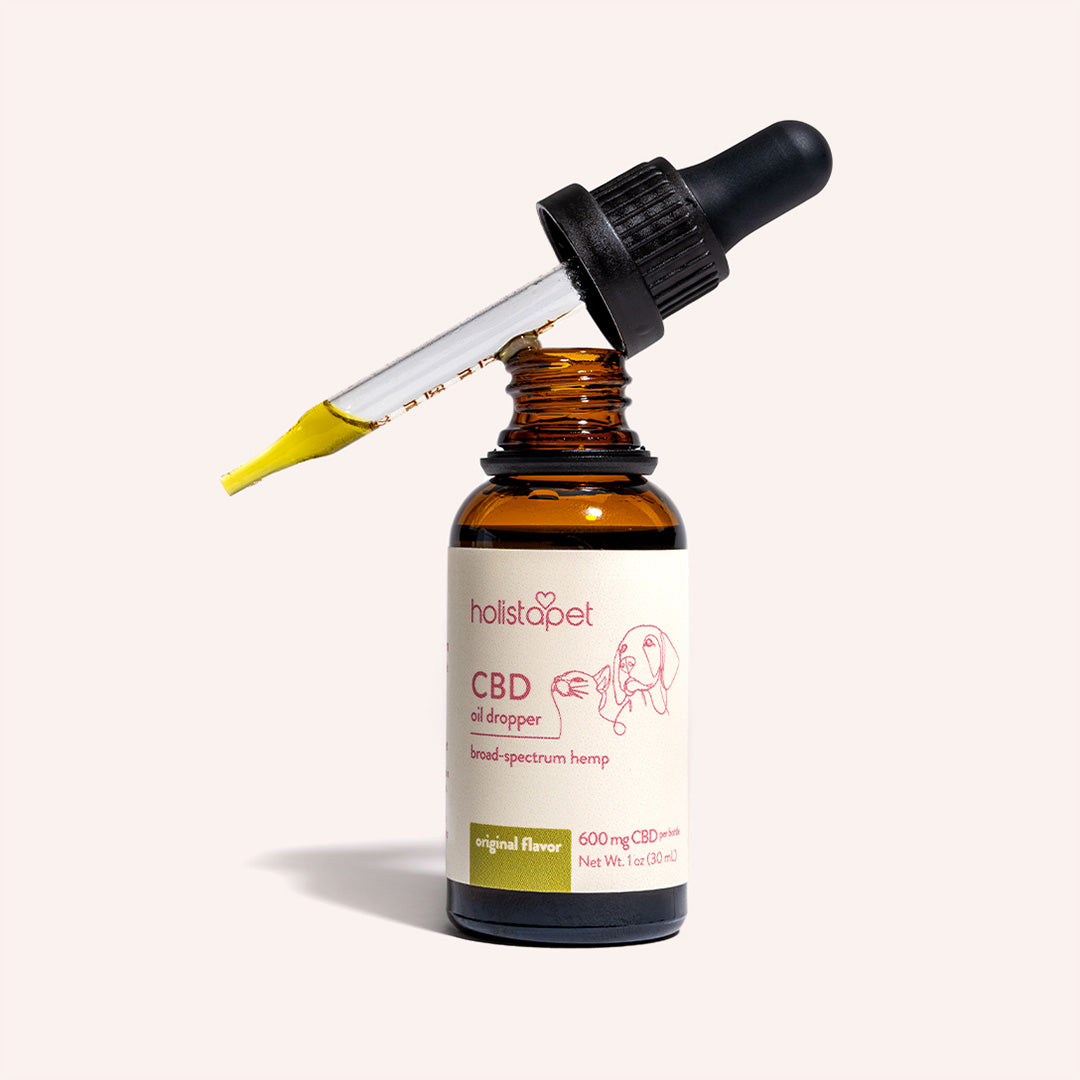
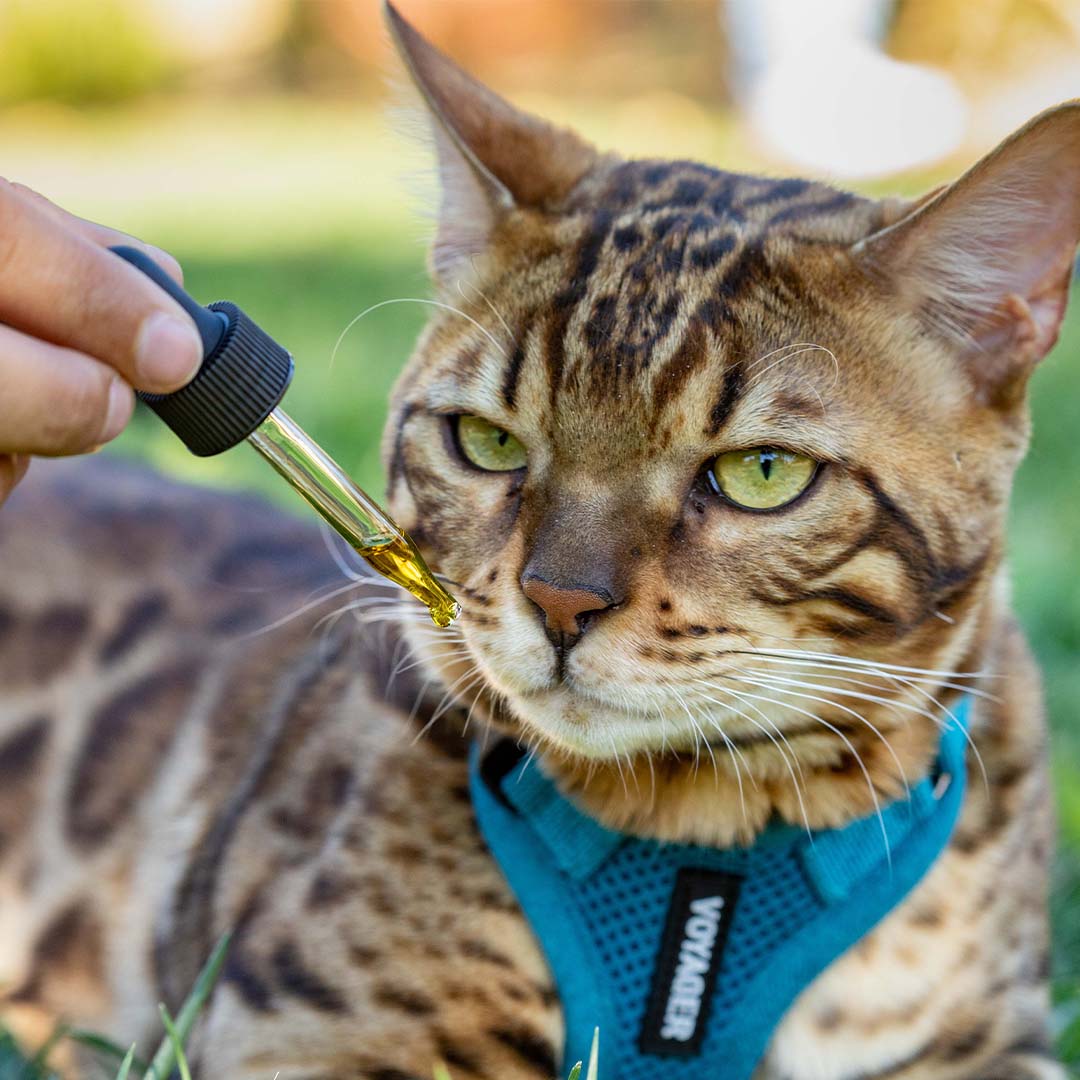
Leave a comment
This site is protected by hCaptcha and the hCaptcha Privacy Policy and Terms of Service apply.